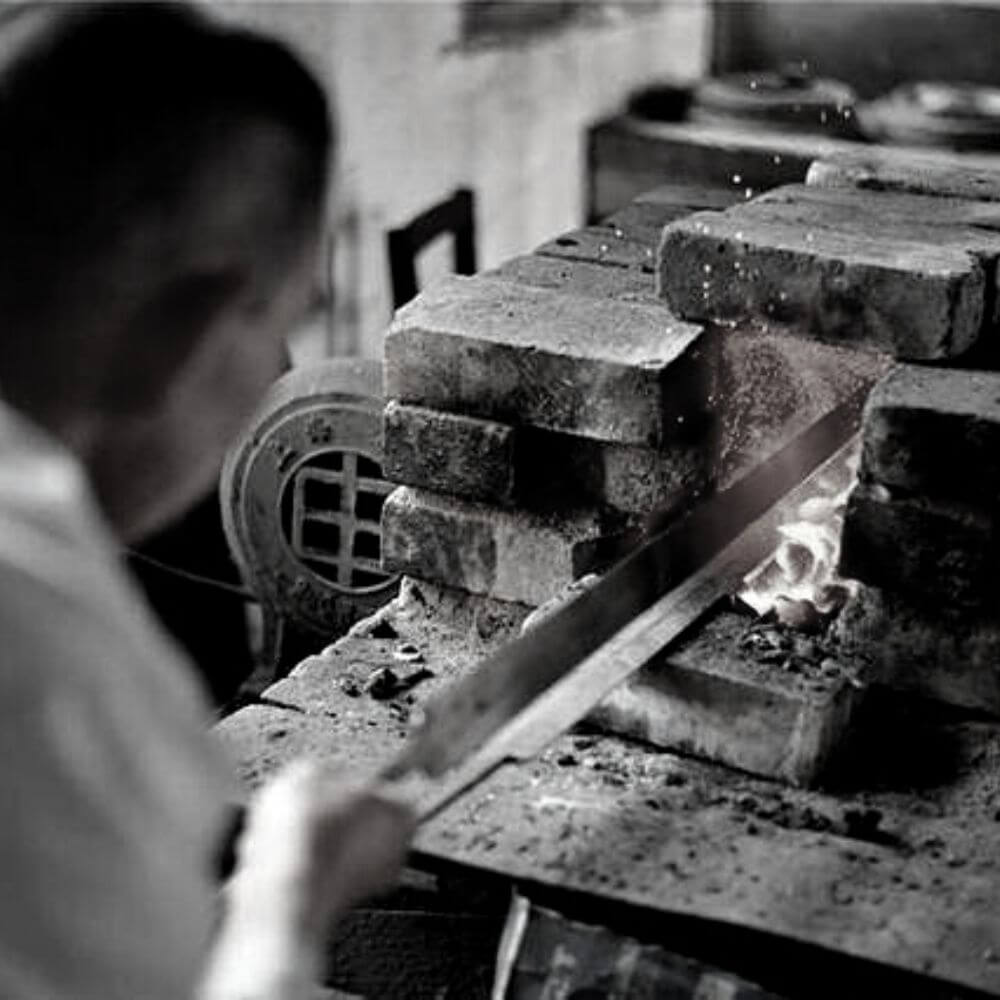Uncommon U.S. Military Knives

In a spirit of curiosity, I've found several uncommon U.S. military knives. Their designs are rather unconventional, regardless of their practicality. It's interesting to see that the United States has had its moments of unorthodox creativity.
Machete Bayonets
We know that in the mid-19th century, bayonets in countries like England and France had the capability to be used for chopping and thrusting. The United States followed suit, albeit with a slight delay, and in the early 20th century, they developed a series of bayonets designed specifically for chopping. The U.S. took an extreme approach by directly incorporating various machete features into their bayonets, giving them formidable chopping capabilities.
 The M1900 Bowie Bayonet
The M1900 Bowie Bayonet
 The M1902 Bolo Bayonet
The M1902 Bolo Bayonet
 The M1912 Long Bolo Bayonet
The M1912 Long Bolo Bayonet
 The M1915 Long Bolo Bayonet
The M1915 Long Bolo Bayonet
 The Filipino Constabulary equipped with the M1915 Long Bolo Bayonet
The Filipino Constabulary equipped with the M1915 Long Bolo Bayonet
 In order to compensate for the limited effectiveness of bayonets, during World War I, the U.S. military developed a firearm bayonet, which involved attaching a set of barrels beneath the M1917 bayonet that could fire .22 caliber bullets. This is quite a surreal development—attaching a bayonet to enhance the rifle's close combat capability and then adding a firearm beneath to overcome the bayonet's short attack range. It creates a rather fascinating and seemingly infinite loop. The set of barrels consisted of six in total and used a bottom-mounted spring mechanism for firing.
In order to compensate for the limited effectiveness of bayonets, during World War I, the U.S. military developed a firearm bayonet, which involved attaching a set of barrels beneath the M1917 bayonet that could fire .22 caliber bullets. This is quite a surreal development—attaching a bayonet to enhance the rifle's close combat capability and then adding a firearm beneath to overcome the bayonet's short attack range. It creates a rather fascinating and seemingly infinite loop. The set of barrels consisted of six in total and used a bottom-mounted spring mechanism for firing.

 During World War II, the U.S. military was equipped with a type of combat knife that used the blade of the Enfield rifle bayonet from the British Army. Since the Enfield bayonet lacked the inherent capability for hand-to-hand combat, the U.S. military outfitted it with a steel pommel. This combat knife was primarily issued to American and British paratroopers for use during the D-Day landings in Normandy, earning it the nickname "D-Day Combat Knife."
During World War II, the U.S. military was equipped with a type of combat knife that used the blade of the Enfield rifle bayonet from the British Army. Since the Enfield bayonet lacked the inherent capability for hand-to-hand combat, the U.S. military outfitted it with a steel pommel. This combat knife was primarily issued to American and British paratroopers for use during the D-Day landings in Normandy, earning it the nickname "D-Day Combat Knife."
 The original Enfield rifle bayonet
The original Enfield rifle bayonet



The combat knife

During the Korean War, a standard-issue Chinese-style cleaver, resembling a Chinese chef's knife, was used by the U.S. military and has since become a collectible item among the U.S. Marine Corps. Records indicate that approximately 27,500 of these cleavers were produced and supplied to the U.S. Marine Corps. There is a story that suggests the origin of these cleavers. Allegedly, the U.S. military found the Chinese People's Volunteer Army's cleavers quite handy during the Korean War and subsequently placed orders to procure them. Long live the great Chinese People's Volunteer Army!



Retractable Triangular Bayonet
In the late 1950s, the U.S. military developed the new M14 semi-automatic rifle.


 The retractable triangular bayonet was developed specifically for the M14 rifle. It was designed to be stored within a steel tube scabbard attached under the rifle's barrel, and when needed, it could be manually extended and locked in place. The primary design concept of this bayonet was rapid deployment, prioritizing quick access over considerations like weight and portability.
The retractable triangular bayonet was developed specifically for the M14 rifle. It was designed to be stored within a steel tube scabbard attached under the rifle's barrel, and when needed, it could be manually extended and locked in place. The primary design concept of this bayonet was rapid deployment, prioritizing quick access over considerations like weight and portability.


 Trench Knife
Trench Knife


Since the trench warfare of World War I, the U.S. military has shown a particular fondness for trench knives, which combine knuckle dusters with combat blades. This has led to the development of a unique American trench knife culture. For example, as mentioned above, the motorcycle footboard incorporates the handle of the M1918 trench knife.


 In modern times, the U.S. military continues to maintain its appreciation for trench knives and has explored combining bayonets with trench knives. The design you mentioned is for the M7 bayonet-knife, a modern variation that incorporates elements from both bayonets and trench knives.
In modern times, the U.S. military continues to maintain its appreciation for trench knives and has explored combining bayonets with trench knives. The design you mentioned is for the M7 bayonet-knife, a modern variation that incorporates elements from both bayonets and trench knives.


Even with the M9, the influence of trench knives remains apparent. This is a prototype of the M9, which is an improvement based on the U.S. Marine Corps version of the M9 bayonet-knife, featuring a handle inspired by trench knife designs.








Leave a comment
Please note, comments need to be approved before they are published.